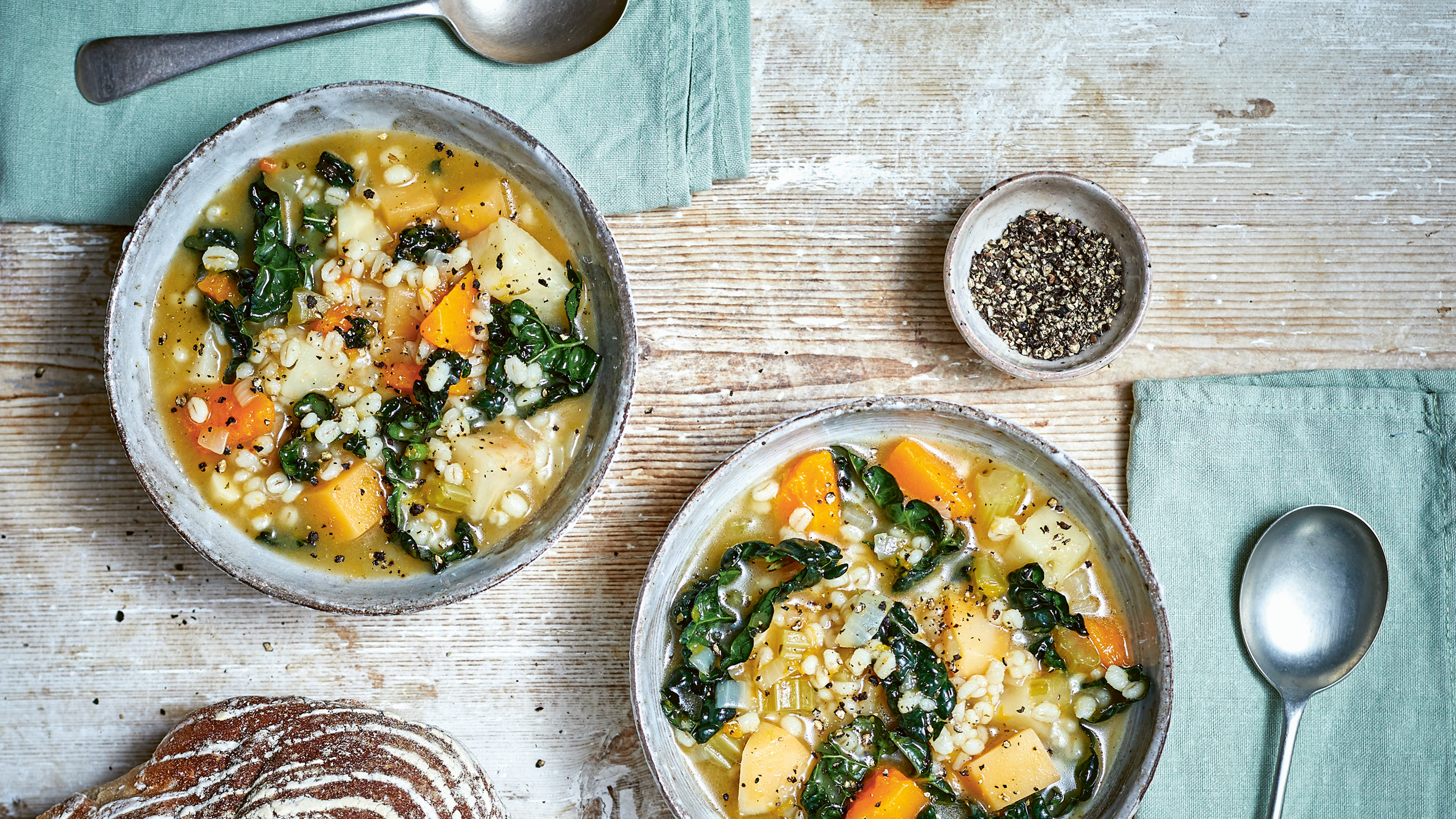Winter vegetable soup recipe: it's perfect for your homegrown winter greens
This delicious winter vegetable soup recipe is a great way to use up leafy greens if you're growing them in the garden


This hearty winter vegetable soup recipe is perfect for lunch during the colder months when you need something filling and nutritious to power you through the afternoon. It's comfort food at its very finest, just the thing if you've been out doing a spot of gardening too and need to warm up.
The recipe is very versatile and can made using any root vegetables you have in the garden or the store cupboard. Plus, if you've already followed our tips on how to grow kale and you've got a plentiful supply, then this is a great way to put your homegrown crops to good use.
This is a really flexible recipe, so you can swap things in and out according to what you have available in your veg patch too. Even better, it can be put together in minutes. It makes four to six portions and keeps in the fridge for a couple of days so you can have it on standby.
Read on to find out how to make it, then head over to our guide on the best vegetables to grow in raised beds if you want to add some more varieties to your plot this year.
- The below recipe was taken from The Plant Power Doctor by Dr Gemma Newman, published by Ebury Press. Head to the end of the recipe for details on how to buy it.
WINTER VEGETABLE SOUP RECIPE

Ingredients:
- 1 tbsp olive oil
- 1 onion, finely chopped
- 2 sticks celery, finely chopped
- 700g vegetables, unpeeled, if possible, and chopped – select at least 3 from: carrots, pumpkin, squash, celeriac, beetroot, swede, parsnip, turnip and kohlrabi
- 150g cavolo nero, kale, Savoy cabbage or similar, shredded
- A bouquet garni of 2 sprigs rosemary, 2 sprigs parsley and 2 bay leaves
- 1 tsp dried oregano
- 4 garlic cloves, lightly crushed
- 100g pearl barley
- 1.2 litres vegetable stock
- 1 tsp Marmite or alternative yeast extract (optional)
- salt and pepper
Method:
1. Heat the oil in a large saucepan or casserole. Add the onion, celery and all the vegetables and sauté gently, stirring regularly, until starting to caramelise slightly around the edges.
2. Add the bouquet garni, oregano and garlic to the pan along with the pearl barley. Season with salt and pepper and add the vegetable stock and the Marmite or yeast extract, if using. Bring to the boil, then reduce the heat to a simmer and partially cover. Simmer gently for around 30 minutes until the vegetables are well on their way to being tender.
3. Add the kale or cabbage to the pot and push down into the liquid. Add a little more stock or water if necessary – it should be quite a thick, hearty soup. Continue to simmer for another 30 minutes until the greens are wilted, the vegetables are tender and breaking up, and the barley is cooked through. Check for seasoning and serve with chunks of sourdough.
You can find more advice on growing your own vegetables with our guides on how to grow garlic and how to grow carrots.
The Plant Power Doctor by Dr Gemma Newman| Available at Amazon
With more than 60 mouth-watering recipes to kick-start your journey, this book shares the transformative effect plant-powered eating can have on your health. Packed with ideas for easy breakfasts, family favourites, meals on the go and much more.
More grow your own advice:
- How to grow butternut squash: they're perfect for soups and roasting
- How to grow onions: try this essential in your veg patch
- How to grow rosemary: add this fragrant herb to your garden

Lifestyle journalist Sarah Wilson has been writing about gardens since 2015. She's written for Gardeningetc.com, Livingetc, Homes & Gardens, Easy Gardens and Modern Gardens magazines. Having studied introductory garden and landscape design, she is currently putting the skills learned to good use in her own space where the dream is establishing a cutting garden.

